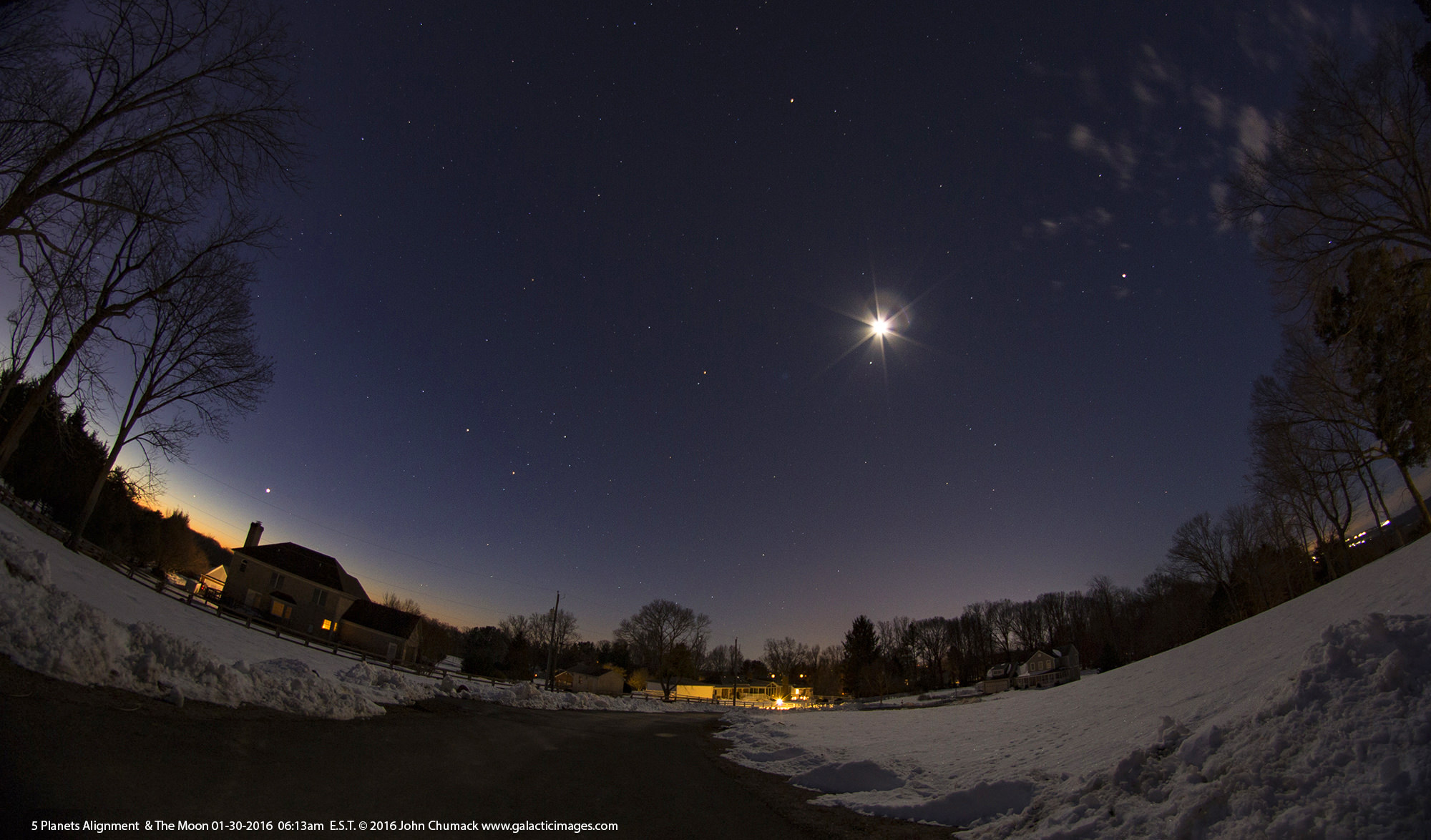Have you seen them? There’s been a quintet of good reasons to awaken early this past week, as the February dawn sky hosts all five classical planets, very nearly in order: Mercury, Venus, Mars, Saturn and Jupiter. For a few days, the waning crescent Moon even joined the show on the weeks leading up to New on February 8th. Fleeting Mercury breaks the streak later this week, exiting the dawn sky as it heads towards superior conjunction on the far side of the Sun on March 23rd.
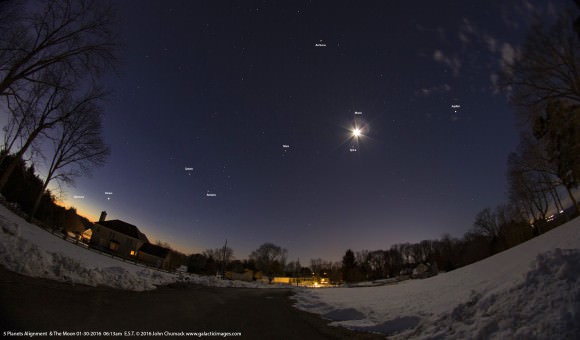
Several Universe Today readers rose to the challenge of capturing the dawn gathering of planets worldwide, with amazing results. These captures are all the more amazing when you consider the 110 degree plus span—nearly a third of the girth of the entire celestial sphere—from dim Mercury in the dawn, to magnificent Jupiter in the west. This particular apparition of Mercury was better for observers in the southern hemisphere, as the angle of the February ecliptic left the innermost planet hiding bashfully in the dawn for folks up north.
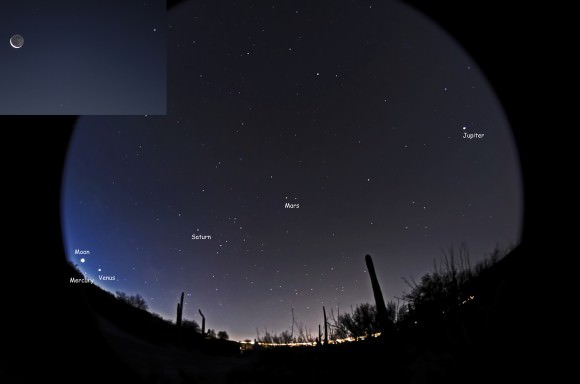
We wrote about this gathering of the planets in the dawn sky last month. Not a true ‘grand alignment’ from a sun-based (biased?) heliocentric perspective, this month’s ‘grand grouping’ sees all five classical planets in the forward-looking windshield of the Earth.
How common is such a dawn alignment? Well, for all five naked eye planets to appear in the sky, you need Mercury to briefly complete the view. But such an occurrence is more of a function of the two slowest members of the quintet, Jupiter and Saturn. Jupiter laps Saturn about every 20 years in its 29 year orbit, making such a dawn or dusk grouping of all five planets in the sky occur roughly every decade or so. How often does Neptune and Uranus join the view? How often do they line up visually… in true orbital order? We’ll leave these astro-calculating challenges up to the asute readers of Universe Today to contemplate.
(Timelapse by Joseph Brimacombe).
What’s next for the planets in 2016? Well, Jupiter heads towards opposition on March 8th, becoming the first of the group to break form and enter the dusk sky. Mars then follows suit, reaching opposition on May 22nd, and swelling to a favorable appearance 19” arc seconds in size. Follow that Red Planet, as we’re now only one opposition away from a spectacular apparition in 2018 that will rival the historic appearance of Mars back in 2003. Will the “Super Mars hoax’ once again rear its ugly head? The optimal window to launch spacecraft to Mars is coming right up, and the European Space Agency’s Exomars Trace Gas Orbiter and Schiaparelli Lander launches on a Proton rocket from the Baikonur Cosmodrome on March 14th. Unfortunately, NASA’s InSight lander won’t make the trip this time ’round, opting instead to make the journey in 2018.
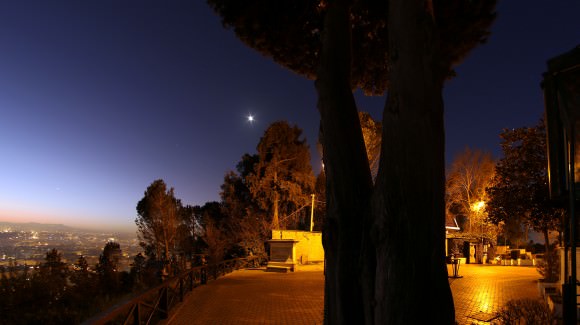
And finally, keep an eye on Mercury, as it transits the Sun just one-half orbit from now on May 9th. And hey, we’re only three weeks away from the start of the first eclipse season of 2016, with the year’s only total solar eclipse of 2016 gracing southeast Asia.
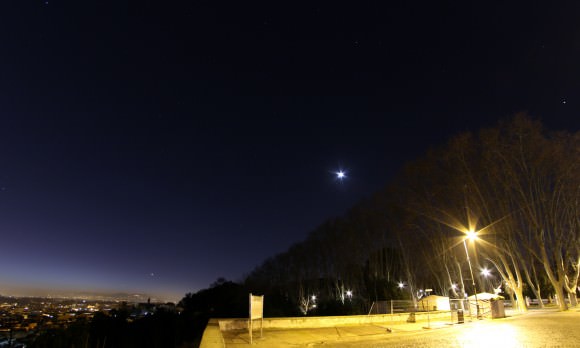
Keep an eye on all the 2016 planetary action, coming to a (hopefully dark) sky near you.

